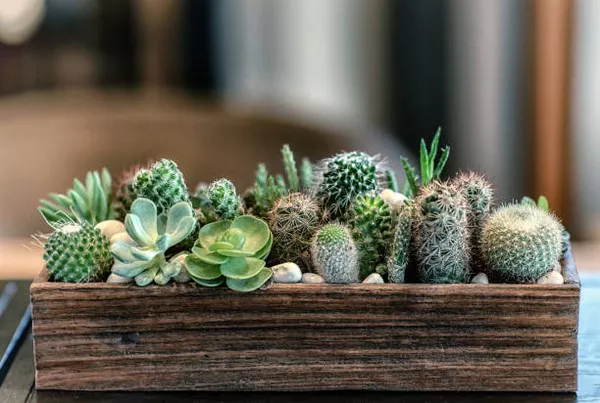Cacti are renowned for their ability to thrive in harsh environments, showcasing remarkable resilience and endurance. Among the many captivating features of these desert-dwelling plants are their vibrant and often ephemeral flowers. However, despite their hardiness, cactus flowers are not immortal. When these blossoms eventually fade and wilt, it can leave gardeners wondering what steps to take next. In this comprehensive guide, we explore the reasons behind wilting cactus flowers and provide actionable strategies for nurturing your cactus back to health.
Understanding the Natural Lifecycle of Cactus Flowers
Before delving into remedial measures, it’s crucial to comprehend the natural lifecycle of cactus flowers. Unlike many other flowering plants, cacti typically produce blooms for a relatively short period, often measured in days or weeks rather than months. This ephemeral nature is an adaptation to their arid habitats, where conserving energy is paramount for survival.
Cactus flowers typically emerge in response to specific environmental cues, such as rainfall or changes in temperature and daylight hours. Once bloomed, these flowers serve a vital purpose in the plant’s reproductive cycle, attracting pollinators like bees, butterflies, and birds. After successful pollination, the flowers begin to wither and eventually drop from the plant, making way for the development of fruits and seeds.
Causes of Wilted Cactus Flowers
Several factors can contribute to the premature wilting of cactus flowers, ranging from environmental stressors to cultural practices. Understanding these factors is essential for devising an effective plan to revive your cactus.
1. Environmental Stress: Cacti are sensitive to environmental fluctuations, particularly extreme temperatures and inadequate sunlight. Exposure to prolonged periods of intense heat or cold can cause stress to the plant, leading to the premature wilting of flowers.
2. Watering Issues: Overwatering or underwatering can have detrimental effects on cactus health, including the wilting of flowers. Cacti have evolved to thrive in dry conditions, and excessive moisture can lead to root rot and other fungal infections.
3. Nutrient Deficiencies: Like all plants, cacti require essential nutrients to support growth and flowering. Deficiencies in key nutrients, such as nitrogen, phosphorus, and potassium, can weaken the plant and result in wilting flowers.
4. Pest and Disease Infestation: Infestations of pests like mealybugs, aphids, or spider mites can sap the vitality of a cactus, causing flowers to wilt prematurely. Similarly, fungal infections and bacterial diseases can compromise the plant’s health and lead to flower failure.
5. Cultural Factors: Improper planting techniques, overcrowding, or inadequate soil drainage can hinder the cactus’s ability to thrive, impacting flower production and longevity.
Steps to Revive Wilted Cactus Flowers
When faced with wilted cactus flowers, prompt action can help rejuvenate the plant and encourage future blooms. Here are some practical steps to take:
1. Assess Environmental Conditions: Begin by evaluating the cactus’s growing environment, paying attention to factors such as sunlight exposure, temperature, and humidity levels. Ensure that the plant is receiving adequate light without being subjected to extreme heat or cold.
2. Adjust Watering Practices: Check the soil moisture levels around the cactus and adjust your watering schedule accordingly. In most cases, it’s best to allow the soil to dry out completely between waterings, particularly during the dormant winter months. Avoid overwatering, which can lead to root rot and fungal issues.
3. Address Nutrient Deficiencies: If nutrient deficiencies are suspected, consider fertilizing the cactus with a balanced, water-soluble fertilizer formulated specifically for cacti and succulents. Follow the manufacturer’s instructions carefully to avoid overfertilization, which can harm the plant.
4. Combat Pests and Diseases: Inspect the cactus carefully for signs of pest infestation or disease. If pests are present, gently remove them by hand or treat the plant with an appropriate insecticidal soap or horticultural oil. For fungal or bacterial infections, prune affected areas and apply a fungicide or bactericide as recommended.
5. Optimize Growing Conditions: Ensure that the cactus is planted in well-draining soil mix designed for succulents, preferably in a container with drainage holes. Avoid overcrowding by providing adequate spacing between plants, and repot as needed to refresh the growing medium.
6. Promote Overall Health: Supporting the cactus’s overall health and vigor is essential for encouraging robust flower production. Consider providing occasional supplemental lighting, particularly during the darker winter months, to ensure adequate light levels. Additionally, avoid unnecessary disturbances to the plant, such as excessive handling or repotting, which can cause stress.
7. Be Patient and Observant: Reviving wilted cactus flowers requires patience and attentive care. Monitor the plant closely for signs of improvement, such as new growth or flower buds. Continue to provide appropriate care and make adjustments as needed to optimize growing conditions.
Conclusion
While wilted cactus flowers can be disappointing, they often serve as a reminder of the delicate balance between resilience and vulnerability in the natural world. By understanding the factors contributing to flower wilting and taking proactive steps to address them, gardeners can help their cacti recover and thrive. With careful attention to environmental conditions, watering practices, pest management, and overall plant health, you can enjoy the beauty of vibrant cactus blooms for years to come.


